10 Exciting Guitarists Putting Their Own Fresh Spin on the Blues
Meet the players who are keeping the blues alive and well for the next generation.
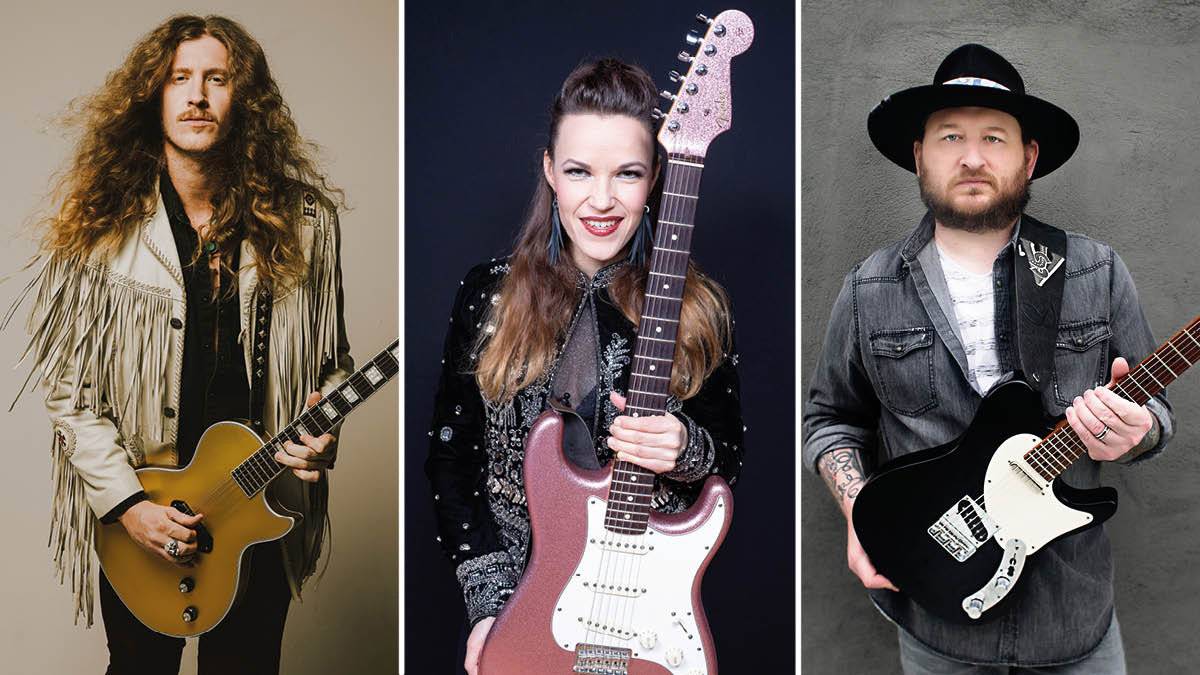
We often talk about the blues being universal, of it being eternal, but as time passes, who are the guitar players that are going to keep the blues alive in the 21st century?
Furthermore, how do these players see the blues and where might they take it? Here, we might find some clues as to the future of the blues, as we meet 10 guitarists who have picked up the baton from the art form's pioneers, and are looking to put their own imprint on its long and storied history.
Brandon “Taz” Niederauer

What does blues mean to you?
The blues is our American musical roots. It’s an essential building block for most American popular music today. Without the blues, the current musical landscape would look totally different. And, because of that, the blues is as alive as ever.
Who are your blues guitar heroes?
Elmore James, Muddy Waters, Duane Allman, Jimi Hendrix, Stevie Ray Vaughan, Robert Johnson, Eric Gales, Taj Mahal, and many more.
What was the first blues song or lick you learned?
All the latest guitar news, interviews, lessons, reviews, deals and more, direct to your inbox!
Duane Allman’s opening solo lick on “Stormy Monday” from the Allman Brothers’ At Fillmore East.
What do you try to achieve in your own guitar playing to make your style and sound unique?
I don’t try to achieve a unique sound. My guitar voice is a natural extension of me, and I believe it comes from my heart, hands, and head, in that order. The players that stand out have their own recognizable sound. In my book, if a player achieves that, then he’s unique.
I’d rather listen to a mistake-filled solo that is unique and adventurous than someone sounding like a technically perfect Clapton, SRV, or Hendrix clone. I think the greatest honor for a guitarist is to be recognized for his own sound.
How do you interpret the blues for a modern audience?
I like to blend elements of rock, soul, R&B, jazz, and funk, and all those influences help me express the sound in my head. A great example of this is the track I recently worked on with Bootsy Collins and Snoop Dogg, “Jam On,” for Bootsy’s new album, The Power of the One.
What are your favorite pieces of gear?
My D’Angelico Brandon Niederauer Atlantic signature model guitar and my Analog Man King of Tone pedal.
What song in your catalog best exemplifies your approach to the guitar?
I think that would be one of my original compositions, “Find a Way.” The song structure allows me to play super melodically, approaching the guitar part slowly at first before building my solo, simmering things back down, and then exploding, if I want to.
Jared James Nichols
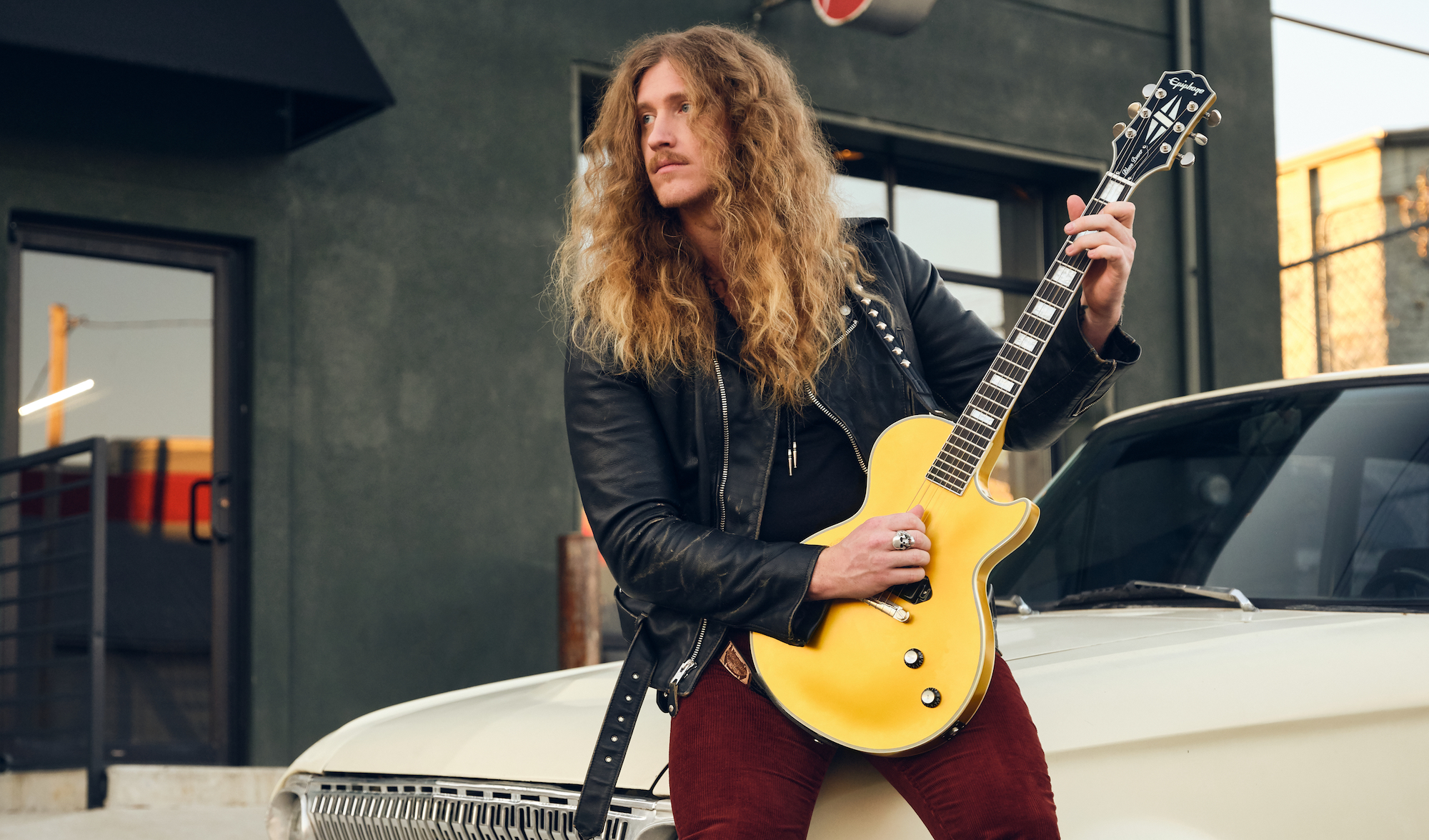
Hailing from Waukesha, Wisconsin – the home of Les Paul – Jared James Nichols has spent the past few years reigniting the heavy blues-rock fires, strangling his Les Paul into pick-less submission with some of the most incendiary fingerstyle licks in modern blues. “You have to commit and you have to mean every damn note you play,” he says.
What led you to the blues?
I came into it through the classic-rock door. I remember being a kid and hearing Zeppelin and Sabbath, and I would hear these licks and the guitar sound and I didn’t know what it was or where it came from. And then when I started to play guitar, I was 15 and someone showed me a VHS tape of Stevie Ray Vaughan – it was Live at the El Mocambo – and I saw a force of nature. I had no idea what I was watching, but it hit me upside the head. I was like, “I want to do that.”
You play with your fingers, and in a very aggressive style. How did that develop?
I do a lot of things in life with my left hand, but when I first picked up a guitar, my teacher said, “You have to play righty,” and he was trying to get me to use a pick. It just wasn’t gelling. But I noticed that when I didn’t use the pick, I had more of a connection with the instrument. It was always more natural to feel the strings under my fingers.
I’m a very simple, raw-approach kind of player. I don’t use a lot of effects. I don’t have much beyond my hands, the guitar, and the amplifier
Plus, when I started to play blues, I noticed that the fingerstyle approach took me away from trying to sound like Stevie Ray Vaughan, from trying to emulate this person or that person. I started to feel the licks and the phrases in my own way. As for the aggressive side of it, I think that just comes purely from my excitement to play.
You’re at an early stage in your career, and yet you already have two signature Les Pauls based on your number-one guitar, Old Glory, as well as a signature Blackstar amp, the JJN-20R.
It’s so cliché, but if you would have told me at 15 years old I would have two signature guitars and a signature amplifier, I would never have believed you. But I’ve always taken everything I do to heart. I love the Les Paul so much. I’ve forged a big piece of my identity through it, and so to be recognized by Gibson and Epiphone is something I don’t take for granted.
How do you interpret blues for a modern audience?
I try to flip it on its head and breathe fresh air into it. I listen to all types of music, and I think the best part about playing blues and playing it the way that I do is that I’m able to take influences from classic rock and more modern rock, as well as country and all these other things and blend them together.
Also, I’m a very simple, raw-approach kind of player. I don’t use a lot of effects. I don’t have much beyond my hands, the guitar, and the amplifier. So for me, the way to keep it fresh is to always explore. The key is to take what we’ve heard, what we love and what we know, and continue to water it and let it grow. That’s the way we evolve and the music lives on.
There’s an aspect of electric blues guitar performance that is highly visual, in the manner of Buddy Guy and Stevie Ray. You certainly continue that lineage. You have a big sound and maybe an even a bigger stage presence.
Whenever I see what I think is the most exciting versions of the blues, it’s when the performers are all in. They’re giving everything they have, and it’s almost like this coming-to-God moment, where whatever’s inside of them is being translated through the music.
So for me, when I pick up the guitar and perform, I want to put every ounce of my being, physically and spiritually, into it. There’s a mantra I have: “You have to be the notes.” I know that sounds very Bruce Lee–like, but you have to. [laughs] And when you do that, it shows and it flows.
Eric Steckel

What does blues mean to you?
My love affair with the blues began over 20 years ago when my father brought home Family Style by the Vaughan Brothers. From that point forward, I was hooked on any music that has feeling and is played from the heart. The blues is all about making people stop in their tracks and feel an emotional and visceral reaction to the groove.
Who are your blues guitar heroes?
The ones that pushed the envelope and opened eyes and ears to the greatness of the genre. At the top of that mountain for me is Gary Moore. I also grew up listening to SRV, Eddie Van Halen, Dann Huff, Zakk Wylde, Duane Allman, Warren Haynes, and many others.
What was the first blues song or lick you learned?
The classic 12-bar, 1 - 4 - 5 blues turnaround was the first thing I played on a guitar at only eight years old.
What do you try to achieve in your playing to make your style and sound unique?
I incorporate ’80s hard rock and modern metal elements into my blues guitar playing, which makes my approach quite progressive, even in 2021. The way I
dial in my tone and my choice of gear – high-gain amps, zero pedals – are also rather unique to blues.
My right-hand technique also comes from more of a metal and hard-rock background, which adds pinch harmonics and attack to my blues playing.
How do you interpret the blues for a modern audience?
My live performance style and the way my albums are mixed/mastered is modern and progressive.
What are your favorite pieces of gear?
It’s been an absolute dream come true for the last three years to have my own signature model with one of the finest boutique guitar brands on the scene today: Knaggs Guitars. I also love my Mezzabarba amplifiers from Italy and my recently launched signature “Candy” humbuckers from Seymour Duncan.
What song in your catalog best exemplifies your approach to the guitar?
“Solid Ground” from Grandview Drive is the quintessential blues-metal track that sums up my approach, tone, vibe, and style in one song.
Chris Buck

What does blues mean to you?
Music with soul and heartfelt expression. I’ve never understood the urge some feel to patrol a genre’s borders. If it’s real, sincere, and comes from a place of genuine longing for self-expression, let it in. Any genre would be better for it.
Who are your blues guitar heroes?
Clapton was my conduit to the blues. Aside from being a great player, he’s always been quick to champion those who influenced him, which made him a great entry point for so much music that would have otherwise passed me by. He’s like a blues genealogist.
What was the first blues song or lick you learned?
“Hideaway” by Freddie King.
What do you try to achieve in your playing to make your style and sound unique?
I’ve always been a huge fan of the elegance and ease of delivery a great vocalist has. I’ve always endeavored to capture a degree of that in my playing.
How do you interpret the blues for a modern audience?
I’ve always worked on the premise that I have pretty decent taste in music, and if I can create music I’d like to listen to, there’ll be others who will like it too.
What are your favorite pieces of gear?
My MacBook, an interface, and anything with six strings. As much as it’s a fun rabbit hole to dive down every now and then, gear rarely inspires me.
What song in your catalog best exemplifies your approach to the guitar?
“Slow Train," from the Buck & Evans album. There’s lots of delicate, pretty chordal stuff, but it has a guitar part that comes in with a snare-drum crack like a shotgun being fired. It’s all about the light and shade.
Martin Harley

What does blues mean to you?
It’s a highly seductive form of self-expression that, when delivered honestly, seeks out the fastest route from the heart to the voice or instrument.
Who are your blues guitar heroes?
R.L. Burnside for his undisputed heavyweight groove, Snooks Eaglin for his effortless and diverse approach, Kelly Joe Phelps for almost disappearing into his songs and delivering transformative live shows, Taj Mahal for tapping into the mainframe of the blues, and J.J. Cale for reminding me less is so much more.
What was the first blues song or lick you learned?
I’m pretty sure it was “Mannish Boy” by Muddy Waters. It was a long time ago.
What do you try to achieve in your playing to make your style and sound unique?
Over time I’ve tried to refine my guitar playing to use less notes and have more impact. It’s easy to get lost in perceived improvement or developed technique and to lose sight of the song as a whole.
How do you interpret the blues for a modern audience?
I aim to please myself first. If I’m not certain that I’m 100 percent into what I’m doing at the time, the audience won’t [be] either. It’s my intention to inhabit the frame of mind in which I wrote the song when it’s performed live.
What are your favorite pieces of gear?
I have a koa Weissenborn-style guitar by Andreas Cuntz. It’s a constant companion. Also a Patrick Eggle custom electric set up for slide and a National Style O.
What song in your catalog best exemplifies your approach to the guitar?
My approach changes from record to record. On the Roll With the Punches album, I was digging into the R.L. Burnside and Junior Kimbrough early recordings. “If Tears Were Pennies” was nice and loose and was inspired by the mighty grooves found in Mississippi hill country blues. Nothing was set in stone, so drummer Harry Harding and I had a few drinks and disappeared into that song for four or so minutes.
Erja Lyytinen

Finnish guitar maverick Erja Lyytinen has been putting her own spin on the blues for close to two decades, in the process earning a European Guitarist of the Year award, sharing stages with the likes of Carlos Santana, and playing to more than 80,000 in her hometown of Helsinki for a televised New Year’s Eve concert.
In addition to approaching the blues from a fresh perspective both musically and geographically, she possesses a powerful, emotive voice and a devastating slide technique. It’s no wonder her 2019 autobiography was titled Blueskuningatar (The Blues Queen).
You released a live album, Lockdown Live, during the pandemic. How did that work?
In Helsinki we had three weeks of total lockdown, and when that time ended, me and my band thought, Okay, let’s get out of here. We traveled up to Kuopio, where I’m from, to do this gig at a warehouse, and we did a livestream and recorded it at the same time.
The coronavirus had just started two months before, so we were still like, “Yeah, we’re going to be gigging soon.” We were still full of energy and giving our best, and that’s why I think people have received it very generously. They like the powerful, energetic feeling that it has.
Blues is commonly viewed as a distinctly American sound. What led you to it growing up in Finland?
I’ve just always really loved blues and soul music. I remember being 16 and having a band and covering stuff from Koko Taylor and Johnny Winter and all these different kinds of blues artists.
I really love that genuine feeling in blues and how strong the performers are onstage. It’s so honest. The emotions feel so real. Of course, I have my own roots, and I have my own kind of Scandinavian sound in my playing, too. But I’ve always been drawn to American and British blues. And everywhere you go, there’s always somebody who plays or listens to the blues. It’s a universal language.
One of the calling cards of your playing style is your distinctive slide work. How did you develop your technique?
Slide started to fascinate me when I was around 20 years old, and I kind of picked it up on my own. I think because nobody really taught me to how to play slide guitar, I’ve been really open-minded with it, and I use a lot of different effect pedals when I do it.
Of course I play in open tunings, and I might use a capo, but then I’ll also use a Whammy Pedal, wah, distortion, and delays and modulation effects. For me, slide is like an adventure.
Do you recall the first blues song or blues lick that you learned?
I was playing Koko Taylor’s music and I was trying to do the vocals and then play the blues riffs in between the lines. When I finally got that going, I was like, “Yeah, this is a new, different world!”
How do you interpret the blues for a modern audience?
I bring in different elements and styles. I’m really open to anything. With my previous studio album, [2019’s] Another World, I was very open in my interpretation of the music. And, you know, in roots music you wouldn’t necessarily need to use any effects, but I use them quite a lot. I have two separate pedalboards with around 12 or 13 pedals. For me, using pedals is a big way of expressing myself as a guitar player.
Gregg Erwin (Magnolia Boulevard)

What does blues mean to you?
People tend to think blues is all about being down, broke, stuck in a rut with no way out. But when I hear B.B. King play single-note lines, for example, I cannot help but hear joy and happiness.
Who are your blues guitar heroes?
Duane Allman was the first to really get me. His knowledge, passion, and love for all music, especially the blues, is at the forefront of his playing to my ears. From there I really started digging B.B. King, Warren Haynes, Charlie Christian, Wes Montgomery, Django, Dickey Betts, Miles, and Coltrane.
What was the first blues song or lick you learned?
The Allman Brothers Band’s arrangement of “Stormy Monday” from At Fillmore East. Duane Allman’s solo in that particular cut is the only guitar solo I’ve ever learned note for note. The tone, phrasing and especially the string bending blew my young mind.
What do you try to achieve in your playing to make your style and sound unique?
My lifelong goal is to sing a guitar, not play it. Every now and then, something happens where you are completely free in the moment to play from your heart. You are truly in the moment.
How do you interpret the blues for a modern audience?
I just try to sing my instrument. I think the human voice is the most intricate instrument out there, so I listen to a lot of the great vocalists and try to incorporate their phrasing, use of time and space where they have to breathe to be able to sing.
What are your favorite pieces of gear?
My touring rig consists of a PRS McCarty, a Custom 22, and the first PRS I acquired, an S2 Standard 22. My amp is a PRS Original Sewell 50-watt head running through a 4x10 half open-back cab with Greenback speakers in it. With this amp I am finally able to plug straight in and ride the volume and tone pots throughout the set. A crucial element is running the amp through a Brown Box made by AmpRX.
What song in your catalog best exemplifies your approach to the guitar?
“Lovin’ Me,” off New Illusion. Maggie [Noelle, Magnolia Boulevard’s singer and guitarist] and I both have rhythm tracks on it, and I have a slide track as well. I found myself thinking on both tracks, how would a horn player approach this?
With the main chord being a major 7th, the possibilities are endless. I love how they often play a semitone up or down from the tonal center of the song in the middle of a beat, so I tried to mimic that a bit with a two-note inversion.
Justin Johnson
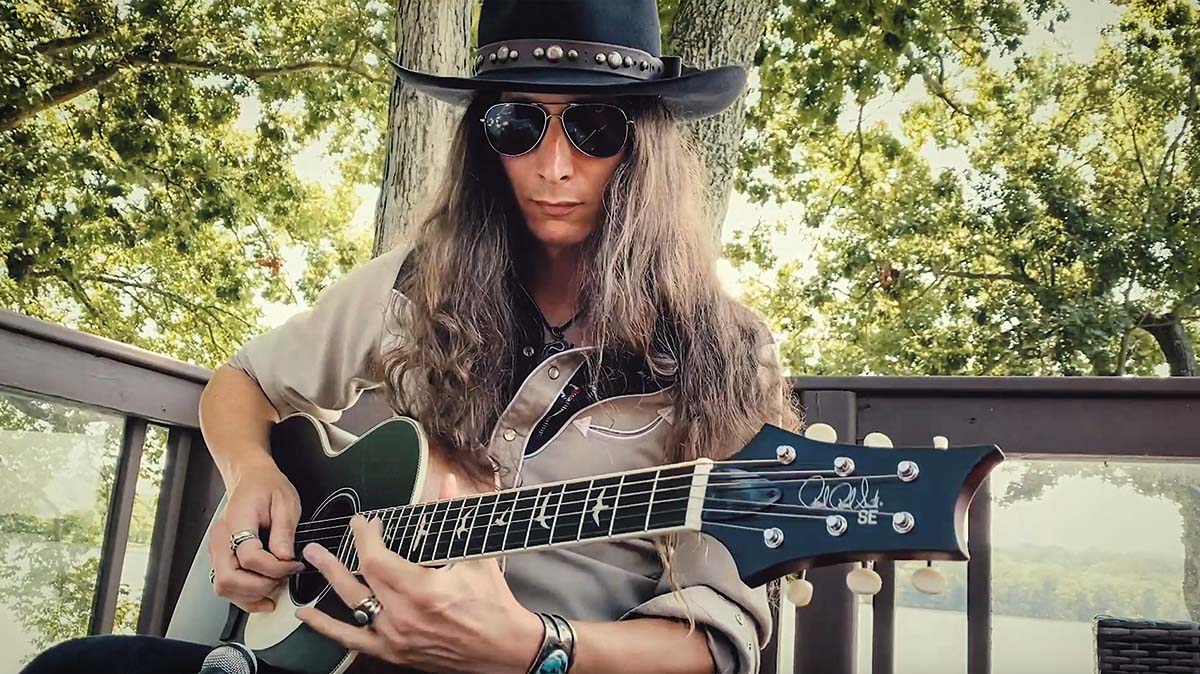
What does blues mean to you?
Doing more with less and making it better by adding feeling, attitude, and style to the delivery is what has always defined my favorite blues musicians.
Who are your blues guitar heroes?
Jimmy Page and Jimi Hendrix were the gateway drug that got me hooked on Blind Willie Johnson, R.L. Burnside, John Lee Hooker, Muddy Waters, Son House, and Lightnin' Hopkins. I also try to pick up slide guitar melodies and techniques from vocalists, especially Ray Charles, Sam Cooke, Etta James, Hank Williams Sr., and Cab Calloway.
What was the first blues song or lick you learned?
I remember learning the “Catfish Blues” riff from the Jimi Hendrix Stages album and becoming obsessed with that style.
What do you try to achieve in your playing to make your style and sound unique?
I love how guitarists like Hendrix and Stevie were so immediately identifiable. I’ve always aspired to develop my own voice on guitar and to tell a story in each song, even without words.
How do you interpret the blues for a modern audience?
People never get tired of the honesty and emotion in blues music. Blues is best when it’s emotional and raw, and those feelings are universal.
What are your favorite pieces of gear?
My 60th Anniversary Fender Tele, my Gyrock with swappable pickups by Wild Custom Guitars, and a custom Phoenix model by Little Crow Guitars. For amps, I use my Hughes & Kettner Triamp MKII for almost everything, I also use a Mad Professor Old School 51 RT Head for that classic, spring reverb, surfy sound, and a custom Square Amp for that rusty vintage dirt.
What song in your catalog best exemplifies your approach to the guitar?
“Whiskey Sippin’ Music,” from The Bootleg Series, Volume 2. That performance was an unfiltered, stream-of-consciousness moment with my old vintage Dobro.
Josh Smith
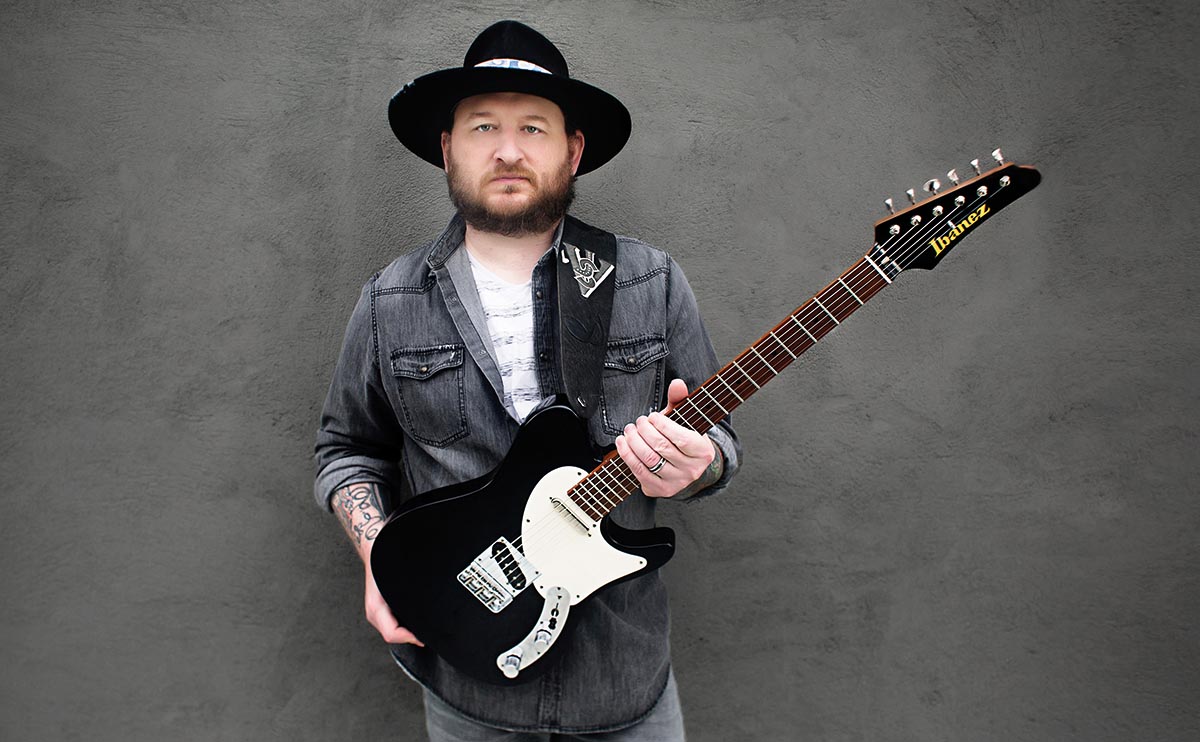
What does blues mean to you?
The Black music that I’ve loved since I was a kid and that I’ve dedicated my life to learning, respecting, listening to, and playing. Secondly, it’s a feeling and emotion that everyone can relate to. The blues is universal.
Who are your blues guitar heroes?
Albert King, B.B. King, Otis Rush, Magic Sam, Hubert Sumlin, T-Bone Walker, Albert Collins, Buddy Guy, Stevie Ray Vaughan, Jimmie Vaughan, Lonnie Johnson, Charlie Christian… I could go on forever.
What was the first blues song or lick you learned?
A B.B. King slow-blues intro. Probably “Sweet Sixteen.” Still gives me chills.
What do you try to achieve in your playing to make your style and sound unique?
I’m always pushing myself to be a better player and musician. No matter how sophisticated the idea or technique is, I want it to sound like me. I’m also always trying to make my playing a more direct connection to my thoughts and feelings.
How do you interpret the blues for a modern audience?
I’m mostly concerned with writing the best material I can and working as hard as I can. I want to write and record new classics. I don’t have a goal to modernize the blues per se; I just want to be the authentic me.
What are your favorite pieces of gear?
My new Ibanez signature guitar, the FlatV1, my LovePedal Tchula overdrive, the Vemuram Myriad Fuzz, the Eventide H9, and my Morgan JS12 amp.
What song in your catalog best exemplifies your approach to the guitar?
“That For You Too” on the Burn to Grow album. I think it’s proof of concept for all my goals: classic style and respect for tradition, more harmony than the average blues song, more fleshed-out production and arrangement than the current blues releases, and my guitar playing straddles it all.
Laurence Jones
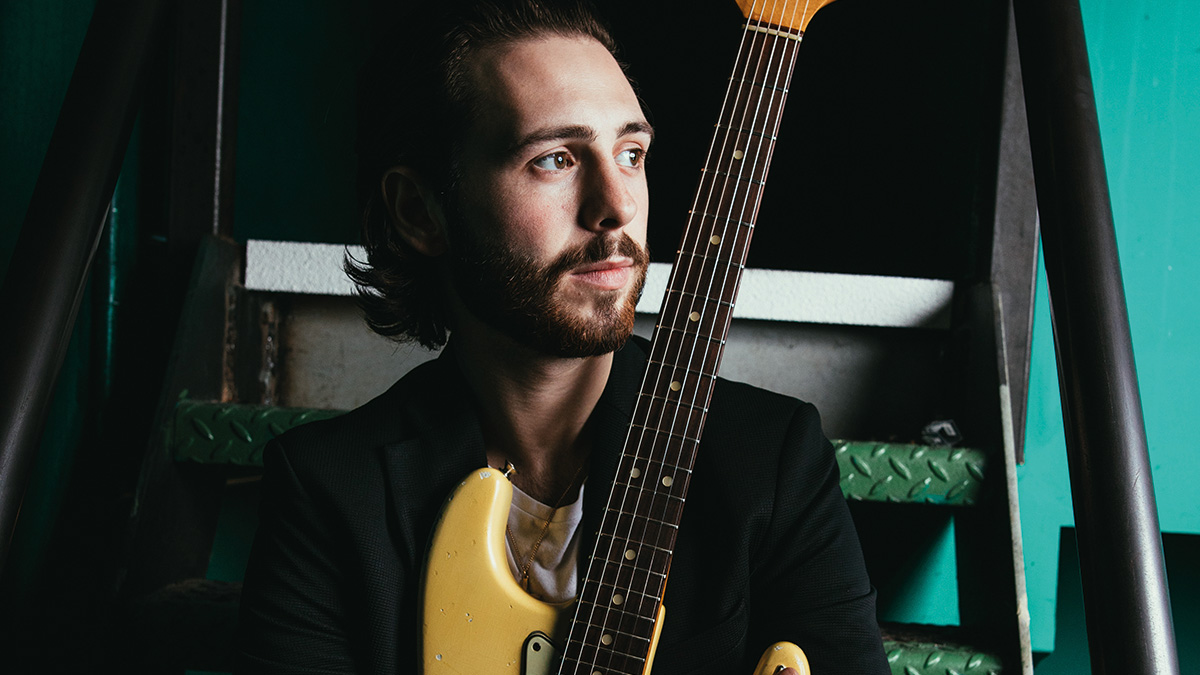
What does blues mean to you?
To me it’s the feeling you get.
Who are your blues guitar heroes?
The main guitarist who got me into the blues was Jimi Hendrix, and from there I learned about Stevie Ray Vaughan from seeing covers he’d done from Hendrix, like “Voodoo Child.” But number one for me is Eric Clapton. I grew up with Clapton. I loved the songwriting and loved that side of things from an artist’s point of view.
What was the first blues song or lick you learned?
“Key to the Highway” – Clapton’s version, of course. I remember really studying that song, learning a lot about the major blues. And from there I found B.B. King. I actually went to see B.B. on his last tour, in Birmingham, England; That was a really interesting gig for me because Gary Moore was the support act, so it was a great opportunity to see Gary play as well.
What do you try to achieve in your playing to make your style and sound unique?
I take influences from my classical guitar playing, which I started when I was eight years old. Because of that, a lot of my style is fingerpicking and has developed from classical guitar.
How do you interpret the blues for a modern audience?
I’d say in a similar way that Clapton does. The main thing for me is catchy vocal hooks and always trying to capture the audience and get that younger audience involved by having proper songs they can sing along to.
I’m also all about the stage show. When I supported Buddy Guy at the Holland International Blues Festival in 2018, I learned from the master that you’ve got to be a showman as well as just getting up onstage and playing guitar and singing.
What are your favorite pieces of gear?
My 1964 Fender Stratocaster, Blondie. I bought that while I was on tour in Denmark in 2017, at a shop called Plektrum. I actually just went in for a packet of strings and the guy grabbed this guitar from the back. It wasn’t even on the shop floor. As soon as I tried it, I knew. My other favorite piece of gear at the moment is the new Marshall Origin50 amp.
What song in your catalog best exemplifies your approach to the guitar?
“Mistreated,” from 2019’s Laurence Jones Band. I’m really proud of the guitar and the sounds we got on that. Our producer, Gregory Elias, did a really cool trick at the end of that song, which is like a false ending.
Guitar Player is the world’s most comprehensive, trusted and insightful guitar publication for passionate guitarists and active musicians of all ages. Guitar Player magazine is published 13 times a year in print and digital formats. The magazine was established in 1967 and is the world's oldest guitar magazine. When "Guitar Player Staff" is credited as the author, it's usually because more than one author on the team has created the story.









